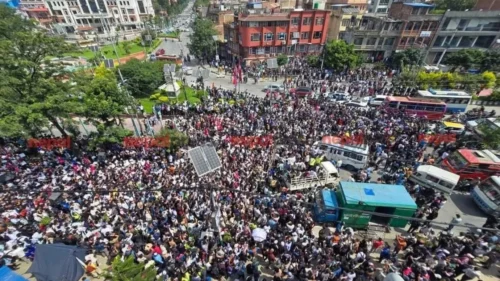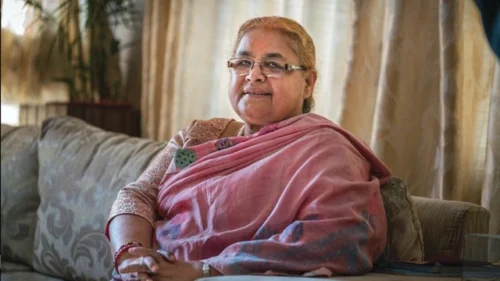Rama Krishna Sangem
Anti-corruption protests escalated in Nepal’s capital Kathmandu September 9 Tuesday, as the KP Sharma Oli government collapsed along with several government buildings that were set ablaze. The protesters have left none – including the opposition leaders, media and the parliament building in expressing their anger through violence.
The unrest was sparked by a social media ban, which has now been reversed by the government. It has now grown into a wider anti-corruption movement that took to the streets on Monday. Initially, it was thought that the protesters were demanding restoration of monarchy and Hindu kingdom. But, later it was turned out that they were just expressing their anger over corruption and unemployment in the country, landlocked in Himalayas.
In total, at least 22 people have been killed in the protests and dozens more injured. As protests raged, Nepal’s prime minister, KP Sharma Oli, resigned from his post. Nepal’s army says it is committed to taking control of the situation, but what happens next – and who will replace Oli – is still unclear.
Nepal army takes control
Nepal’s army has issued a statement accusing protesters of taking advantage of the current crisis by damaging, looting and setting fire to public and private property.
It says that if this continues then “all security institutions, including the Nepal Army, are committed to taking control of the situation,” effective from 22:00 local time (16:15 GMT; 17:15 BST), without detailing what this might entail.
“We appeal to all citizens to support the army in this effort,” it says, adding that further updates will be provided “upon assessing the situation”.
Army chief calls protester for talks
Nepal’s army chief has invited protesters to engage in dialogue to find a solution to the country’s current political crisis. In a video message released on social media, Chief of Army Staff General Ashok Raj Sigdel says the military was committed to safeguarding national unity and territorial integrity. He says there has been huge loss of life and property during the protests so far and urged demonstrators to show restraint.
“It is our common responsibility to maintain law and order, ensure national unity and not to let additional loss of life and property,” he says. He describes the current situation in Nepal as “an uneasy situation” and calls for normalising tensions. He also expresses condolences to those who have died during the ongoing protests.


